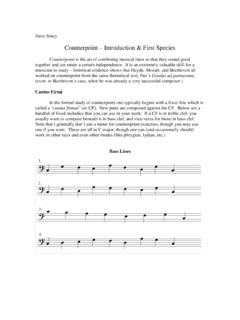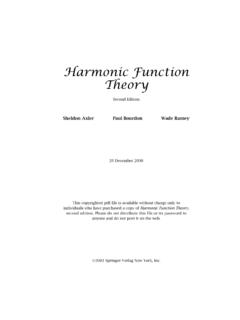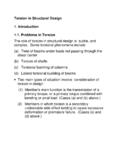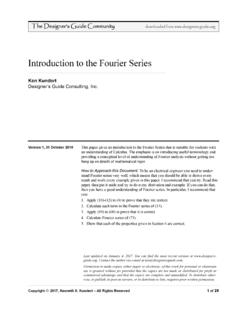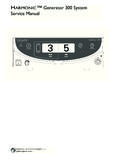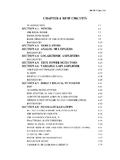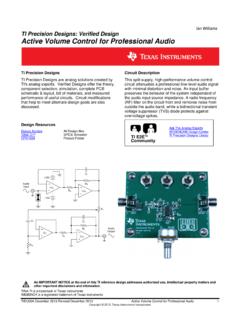Transcription of Getting Started with 4-part Harmony - Dave Smey
1 Getting Started with 4-part HarmonySome of you have already written chord progressions in a previous theory class. However, itis my experience that few students come to college with the ability to consistently whip offprogressions correctly. Thus, I would recommend that you take a careful look at the way I veorganized things here. (If you have never done this before, relax! It s virtually painless, Ipromise.)You can also compare this packet to Ottman pp. basic setup - bass line + upper voicesWhen we write harmonic progressions in a 4-voice texture, one usually thinks in terms ofa bass line plus 3 upper turns out that the two parts of the texture behave very differently.
2 The upper voices tend tomove from chord to chord in the smoothest way possible. They are also carefully stacked sothat they create a homogenous, blended sound. (The way they must be arranged is called spacing, and you will need to learn the spacing rules as explained below.) The bass line, onthe other hand, will leap around a bit more, and it is exempt from the spacing rules. It willoften wander away quite far from the upper voices. (I like to say that it is a free agent. )The bass line is very easy to write, since it is spelled out for you in the requested chordprogression. For now, we will write with all chords in root position - this means that the bassline will always cover the root of each voicesbass lineIIVVIC:IIVVIIIVVIT hree possible bass lines for the same progression 2004 Dave Smey.
3 Reproduction and classroom use freely style helps you think of the progression as though it was choral music. SATB stands,of course, for the standard division of choral parts - soprano, alto, tenor, and bass. In this styleyou put the soprano and alto parts on the top staff and the tenor and bass on the bottom. Youwill usually stem each part seperately, so that soprano stems always point up, alto stems down,and so on. (See my example.)There are actually two different ways you can arrange your 4-voice music on the staff, whichare commonly called the keyboard and SATB keyboard style, the bass line is by itself on the bass clef, and the upper three parts are on thetreble staff.
4 One usually beams the upper voices together like a single chord. Up to this pointall of my examples have been drawn in keyboard Style vs. SATBMany of you have already been taught to write in SATB style all of the time. I would stronglyrecommend giving keyboard style a try -- it is much easier to conceive, to read, and to playthan SATB. It will help you to learn faster and make fewer upper voices will cover all three tones of the triad. Thus one of the tones ends up being doubled, since it appears in both the upper voices and the bass line. In the beginning, thatnote should always be the root. There are other possibilities, but we ll worry about them later.
5 It s important to start off being 100% consistent, so, once again:1) Always cover all three tones in the upper ) Always double the threetonespresentdoubled rootsopranoaltotenorbass2 Open vs. Closed VoicingsSo far in this packet I ve written everything in closed voicings. (Also called close voicings.) The triads in the upper voices are stacked as tightly as possible. The opposite of this wouldbe open voicings, in which one leaves extra space in between the upper turns out that open voicings are easy to screw up -- if you are not careful you will violatethe spacing and doubling rules. However, I ve got a little trick that will help you make properopen voicings every time, by thinking of open voicings as a transformation of closed by thinking of your progression in closed voicings.
6 Then, take the alto part and send itdown an octave, into the tenor part . Voila, instant open voicings! (Eventually you will foregothe step of actually composing the closed voicing first -- but you should continue to mentallydoublecheck your open voicings in this way.)A properly spaced and doubled open voicing will skip over one chord tone from S to A andfrom A to T. Notice how the result is nice and evenly spaced (just like a closed voicing onlymore spread out.)closedopenskipskip3closedopenNot following the skip pattern causes spacing anddoubling spacing is wrong whenthere is more than an octavebetween any adjacent pair ofupper voices.
7 (So more thanan octave between S & A, orA & T.)The proper spacing pattern isalso intimately related Spacing Ruleno triad tonesare skippedherespacing error hereThe Relationship Between Style and SpacingIt turns out that keyboard style goes well with close voicings, and SATB style goes well withopen. Don t confuse the two concepts, though - they are seperate! You can write close voicingsin SATB, or open in keyboard style if you want voicing, keyboard styleclose voicing, SATB styleopen voicing, SATB styleopen voicing, keyboard styletoo many tonesskippedbad doubling -2 roots, 2 fifths, no third!4In general it is not advisable to flip-flop between open and closed voicings, nor is it smart tomove frequently between the two styles -- better to pick one and stick to it.
8 If you do have adesire to change from keyboard style to SATB, however, you can do it as long as you draw alittle line to show where the tenor part crosses Between the StylesPractice Exercises (for in-class completion)A. Making Close VoicingsFor each of these chords I ll provide the roman numeral and a soprano note. Fill in the alto & tenor voices directly below the soprano (making a close voicing) and provide a bass notein the lower giveand these little progressions which are written in close voicings, keyboard style, and convert them to open voicings, SATB. All you really have to do it copy the alto part down an Converting closed to open AND keyboard to SATBE xampleconverts toconverts Good closed voicingB.
9 Spacing errorC. Good open voicingD. Bad doublingAssign a letter to each one of these Error FindingD. Making Open VoicingsMake an open voicing for each chord. You can use either SATB or keyboard ( = Ottman s First Procedure p. 92)We are going to carefully build up a vocabulary of chord progressions. Each stop on the waywill introduce both a new harmonic function and new voice-leading requirements ( newthings you need to remember when you connect the chords).The first unit focuses on the V chord, though it turns out the voice-leading procedures applyto any chords related by a fourth or V chord is the most important Harmony in the tonal universe besides I.
10 In the near futurewe will look at how the V-I progression punctuates most phrases in Classical get Started writing V-I progressions in 4 voices, there are 2 procedures you need to learn. If you follow these formulas you will automatically avoid making the common errors of four-voice writing (like parallel 5ths, etc.) Thus, we can starting writing without worrying too muchabout rules (which will come soon enough.)I - V - I ProgressionsThe Common-Tone ProcedureThe absolute smoothest and simplest way to connect chords related by fourth or fifth is to takea common tone. It s easy. Let s start by making a I-V-I progression in C ) Figure out which note belongs to boththe I and the V chord.

